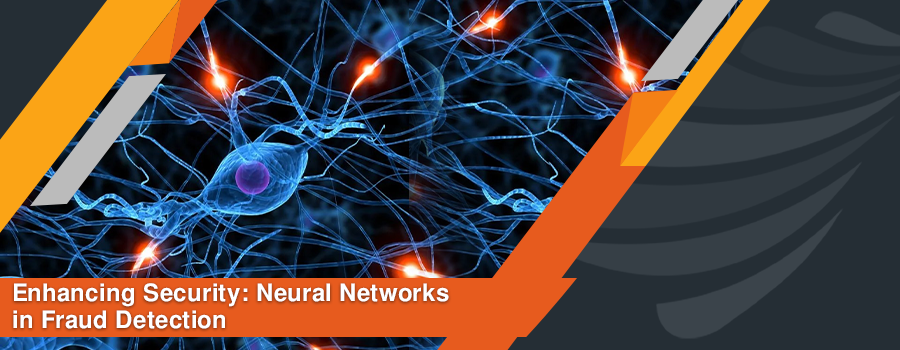Fraud is an offensive act of cheating someone by gaining unauthorized access to his personal information. The purpose can be blackmailing, withdrawing money, data hacking, and using it for unique benefits. In extreme cases, a fraudster can completely take over the company and make them bankrupt with imprisonment.
After the rise of AI and machine learning, the number of frauds in industries is rising enormously.
Businesses and consumers are experiencing huge losses due to data breaches and online fraud. Therefore, there is a need to explore the main incite of this issue. In this article, we will understand neural networking technology and its role in strengthening business security and reducing the number of fraud incidents.
Why do Businesses Need Strong Security Systems? – Statistical Evaluation
Security threads and online frauds are escalating in different domains and scales. Despite installing strong security systems, no control over eliminating online scams exists.
According to Federal Trade Commission, 2.4 million consumers reported fraud in 2022. The most reported online scams include lotteries, shopping, prices, business investments, job opportunities, and sweepstakes. On the other hand, businesses experienced a loss of $4.35 million in 2022 because of data breaches.
Businesses need a highly secure work environment to protect their data, employees, and systems. Ensuring the security of the workplace is an essential part of company policies. It also helps businesses to comply with business laws and regulations and to gain a competitive advantage.
Understanding Advanced Fraud Detection System
Fraud detection systems are designed when there is no success through implementing preventive mechanisms. Forming a fraud detection system is not enough. We also want it to be efficient and cost-effective so that the cost involved in the system does not exceed the actual damage cost. Advanced algorithms, models, and statistical rules allow us to achieve these milestones.
Different fraud detection systems have emerged, but the top choice now is to rely on machine learning and artificial intelligence. One of the examples is AssetGuard, which sends warnings of threats and breaches before an event occurs.
Companies work on artificial intelligence and develop complex algorithms for fraud detection. These algorithms continuously monitor the system and react to any situation change, sending warning signs to the owner. In this way, it allows the owners to detect threats early and take preventive measures.
Role of Machine Learning and Neural Networks in Fraud Detection
Machine learning is used in fraud detection when there is involvement of complex data; therefore, it is suitable to be applied at the business and industrial levels. The method of fraud detection using machine learning initiates with data collection and segmentation. Later, the operators feed machine learning with training sets to predict the probability of cyber threats.
We have discussed the details of the whole process in the following two sections.
Building Machine Learning Model For Fraud Detection
Steps involved in the process of building a model for fraud detection:
1. Data Collection and Segmentation:
For the development of algorithms, we need big data related to every domain and sector we want to secure. There is also a need to eliminate the noise in the data, so the algorithms must be strong enough to filter out it, such as general information of customers and their data through which any fraudulent activity can initiate.
After inputting and filtering out data, we need to segment data so that the model can provide efficient results.
2. Data Exploration and Feature Extraction:
We explore and analyze data patterns to understand fraudulent and non-fraudulent activities. Afterward, we accumulate relevant features to understand complex and unique cyber attacks. The process may involve data aggregation, developing special variables, and altering existing features.
The integration of features allows the identification of signals highlighting fraudulent activities. The most important features that help in discovering fraud are:
- Unusual transaction frequency
- Geographical inconsistency
- User device and IP address
- Odd transaction amount
- Strange social activity
- User behavior profiling
- Unusual payment method
- Velocity checks
- History of fraud records
- Merchant category
- Change in user location
- New account formation and use
- Address Verification System (AVS) mismatches.
3. Training Algorithms
At this point, we create algorithms and train them to understand the difference between fraudulent and normal activities using the learning dataset. In this way, we teach machines to make accurate predictions. The added features in the algorithms also help train machines for predictive analysis.
4. Building Models
With the training set, we make the model understand and comprehend the defined algorithms. After completing machine training, we get a profound model for fraud detection. We make different models for fraud prediction by using unique techniques and adding features to the algorithms.
Neural Networks – Advance Technique for Building Model
There are different techniques for fraud detection. One of the most competent is a neural network. Neural networks are a subset of artificial intelligence, revolutionizing the fraud detection mechanism.
It enhances exposure to data and belongs to cognitive computing technology in which machine works like human brains. They are easily adaptive and learn by exploring the huge amount of data. The most promising qualities of the neural network are making real-time decisions, processing quickly, and effectively recognizing complex patterns.
How Do Neural Networks Work?
Neural networks are made of interconnected nodes or neurons. They are trained on the labeled dataset, and after training, they can predict unseen data. They can handle complex data and can understand changes in the patterns.
Neural networks are trained on the labeled dataset, and after training, they can predict unseen data. They can handle complex data and can understand changes in the patterns.
The working of neural networks in detail is discussed below:
1. Input Layer
Neurons are set in layers (input layer, hidden layers, output layer). The input layer receives raw data and passes it to the first hidden layer.
2. Hidden Layer
The first hidden layer processes input data and pass it to next hidden layer. Each hidden layer checks different parameters like location, IP address, mode of payment, and transaction frequency.
3. Associated Weights
The interconnection between the neurons has associated weights that signify the power of the transferred signals. The neural networks get training to adjust these weights and related biases.
4. Calculation of Weights and Bias
Each hidden layer process input data with weighted connections and passes the output to the next layer. After this, they calculate weighted sums of input and biases, allowing the introduction of non-linearity via activation functions. Computation is carried out based on experience and self-learning ability for calculating the probability of fraud.
5. Backpropagation
Via a process known as backpropagation, the network learns from data and adjusts weight considering the difference between actual and predicted results.
6. Outer Layer
The output layer develops the final predictions considering the major tasks like multi-task and binary classification.
Role of Neural Networks To Enhance Business Security
Neural networks escalate the power of fraud detection and prevent businesses from reputational damage and financial loss. Neural networks have a strong role in fraud detection:
1. Identifying Patterns
Neural networks analyze complex data and recognize even those patterns that are difficult to detect by traditional systems. It learns from intricate patterns and identifies fraudulent behavior efficiently.
2. Detect DDOS
Neural networks also assist in boosting business security by detecting Detecting Distributed Denial of Service (DDoS) attacks. These types of attacks are possible while using neural networks. The system detects patterns like different requests at one time, random IP addresses, or increased requests from a single IP address.
3. Less False Positives
False positives are one of the major concerns of predictions and pattern analysis. We can effectively understand complex data and connections with neural networks, reducing the probability of false positives.
4. Adaptability of Trends
Fraud tactics are continuously evolving, making it difficult to make predictions by traditional methods. We can understand complex data changes with neural networks and make predictions for unique patterns.
5. Anomaly Detection
Neural networks are well known for detecting anomalies that reflect fraudulent behavior. The key is that they see deviations from usual activities and easily highlight suspicious acts that remain overlooked through other means.
6. Secure Digital Transactions
In recent years, online scams and false transactions have increased. With neural networks, we can ensure secure digital transactions. We can evade illegal transactions and data hacking by analyzing behavior, device data, location, and user details.
Key Takeaways
Neural networks are made of interconnected nodes or neurons. They are trained on the labeled dataset, and after training, they can predict unseen data. When businesses rely on neural networks for fraud detection, they can implement strong security measures and prevent businesses from experiencing high financial loss and even reputational damage. Neural networks can process a large amount of complex data and complexity of patterns, making them best suitable for understanding changing trends in fraudulent activities.




